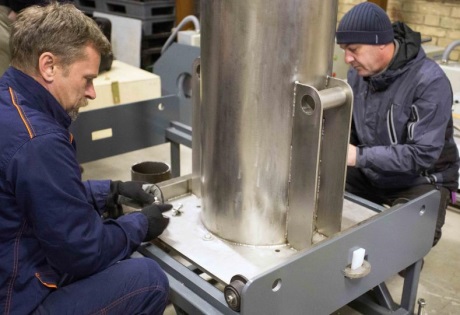I have frequently blogged about the problem of disposal of nuclear waste. Spent nuclear fuel assemblies are filling up the cooling pools at nuclear power plants in the U.S. and other nuclear powered nations. The U.S. intended to have a deep geological repository by the year 2000 but in 2009, the Yucca Mountain repository project was cancelled by the U.S. government and there will not be a U.S. permanent disposal site for spent fuel until at least 2050. The high level radioactive waste being generated by the U.S. nuclear weapons program had its own geological repository called the Waste Isolation Pilot Plant in New Mexico but a recent accident closed that facility and it may be years before it is reopened.
In addition to spent fuel and weapons waste, there are low-level sources radioactive materials that need a safe storage method. This waste is from discarded radiation sources used by health care, construction, survey and other industrial facilities. Many countries now generate a hundred or more such used radiation sources per year but have no good way to move and dispose of them. When combined, this waste from a typical country would occupy less than thirty five cubic feet or about a cubic yard. Currently, most of these discarded radiation sources are temporarily stored on or near the surface without sufficient protection to prevent theft or leakage. (Recently a truck carrying discarded cobalt radiation sources from a medical facility in Mexico was hijacked and people were exposed to radiation before they realized exactly what was in the truck.)
The International Atomic Energy Agency is working on tests of a new technology to assist in the movement and permanent disposal of small amounts of low-level radioactive waste. The IAEA has been collaborating with a radiation protection company in Croatia on testing a transportation system for moving low-level radioactive waste to a borehole that would be about a thousand feet deep. Each country could drill its own boreholes to take care of its own low-level wastes.
The system consists of a metal platform and a mobile container referred to as a “transfer cask” that would be used to hold the material during transport to the borehole. The radiation sources will be treated and repackaged in a process called “conditioning”. Then combined and conditioned wastes will be placed in a specially designed canister which is sealed. The sealed container is loaded into the transfer cask. It will then be transported to the borehole and inserted.
This system is simple and inexpensive. It can be easily be implemented across the world. In a world of growing international tension and terrorism, nuclear security is becoming more important.
The borehole system could also be used to deal with spent nuclear fuel and weapons waste. First, a hole is drilled five miles down into stable bedrock. Containers of waste are inserted into the borehole until they reach three miles below the surface. Then the rest of the hole is filled with crushed rock, soil, asphalt and/or concrete. Once the landscape is restored above the repository, no one even needs to know what is buried below. The waste will not be bothered by ground water or escape from its hole. Boreholes could be drilled at reactor sites, laboratories or production facilities above the right type of geological configuration. The drilling rigs are mobile and could be easily moved from site to site. The cost would be reasonable and the approach much quicker and safer than building a single geological repository and transporting all the waste to it.
IAEA testing new disposal system:
Credit: L Gil Martínez/IAEA







